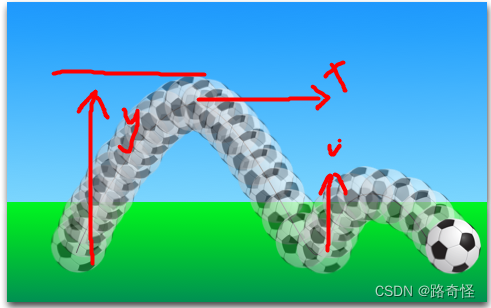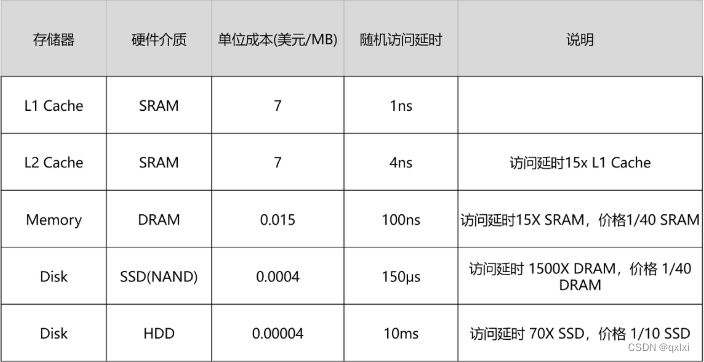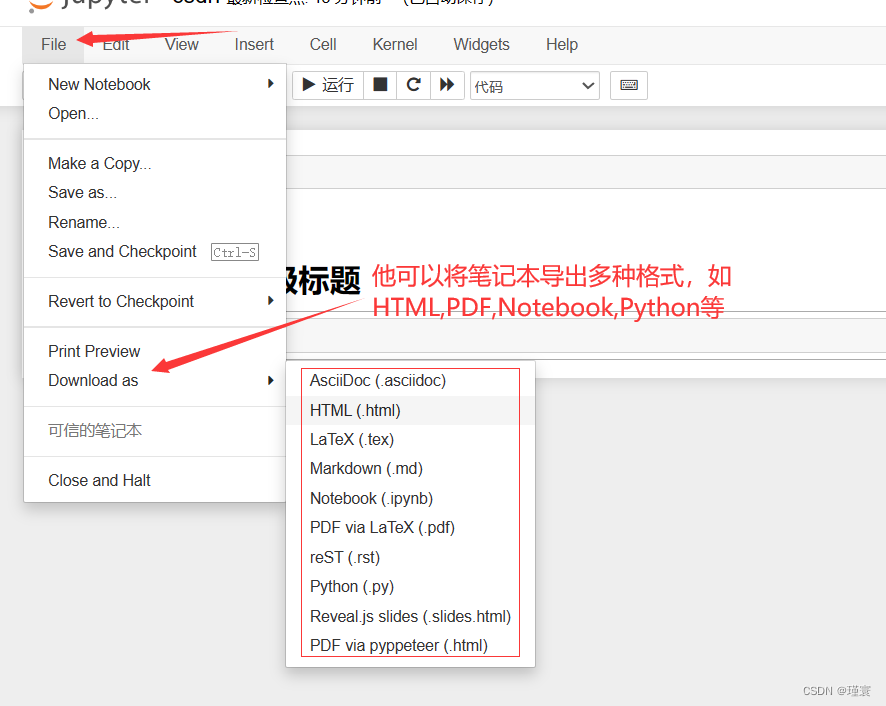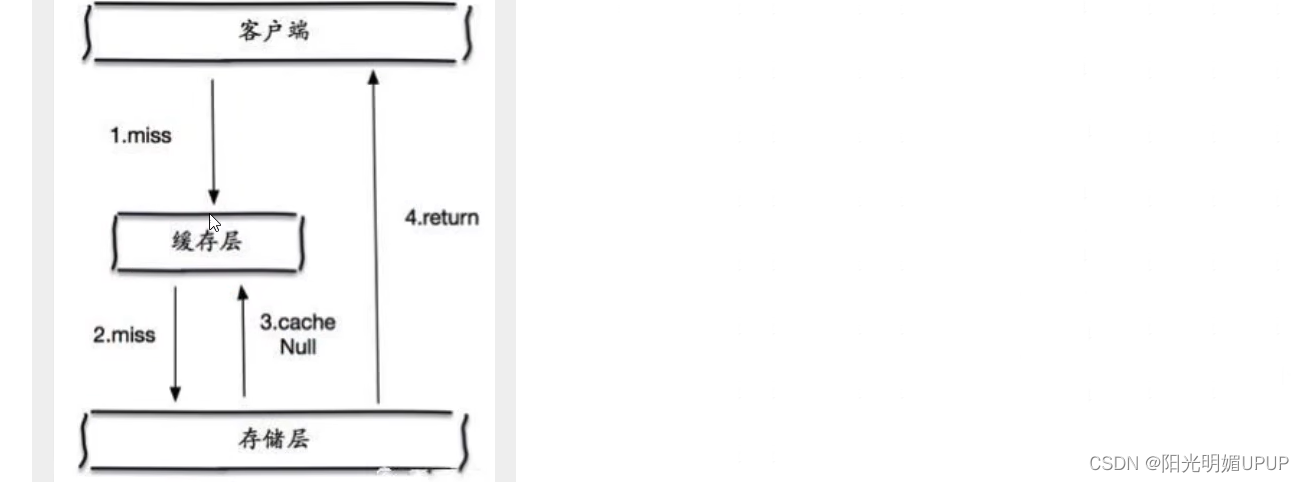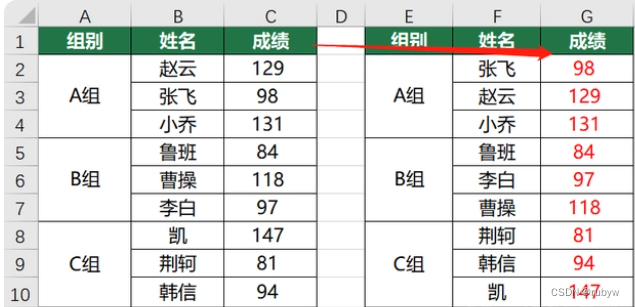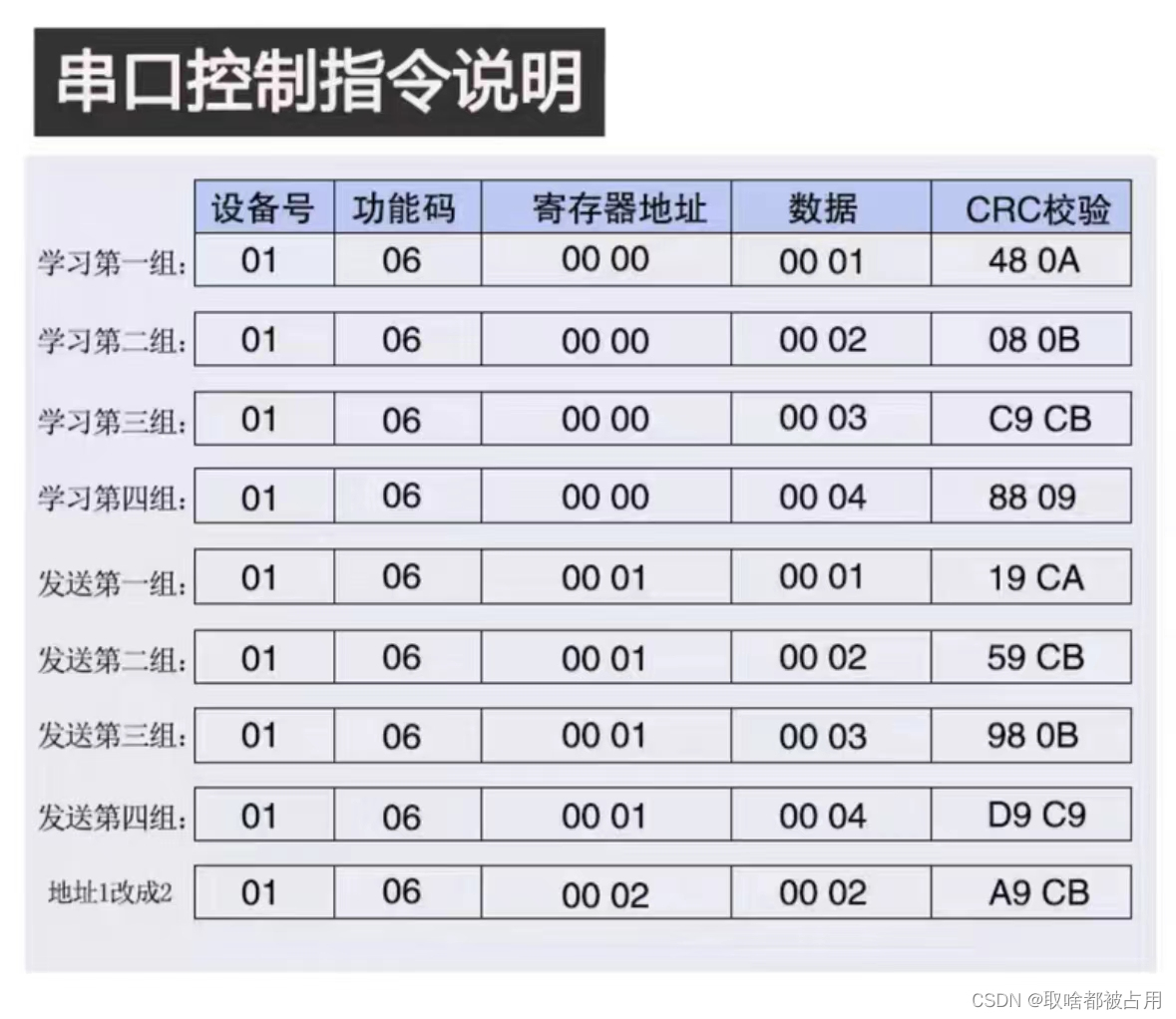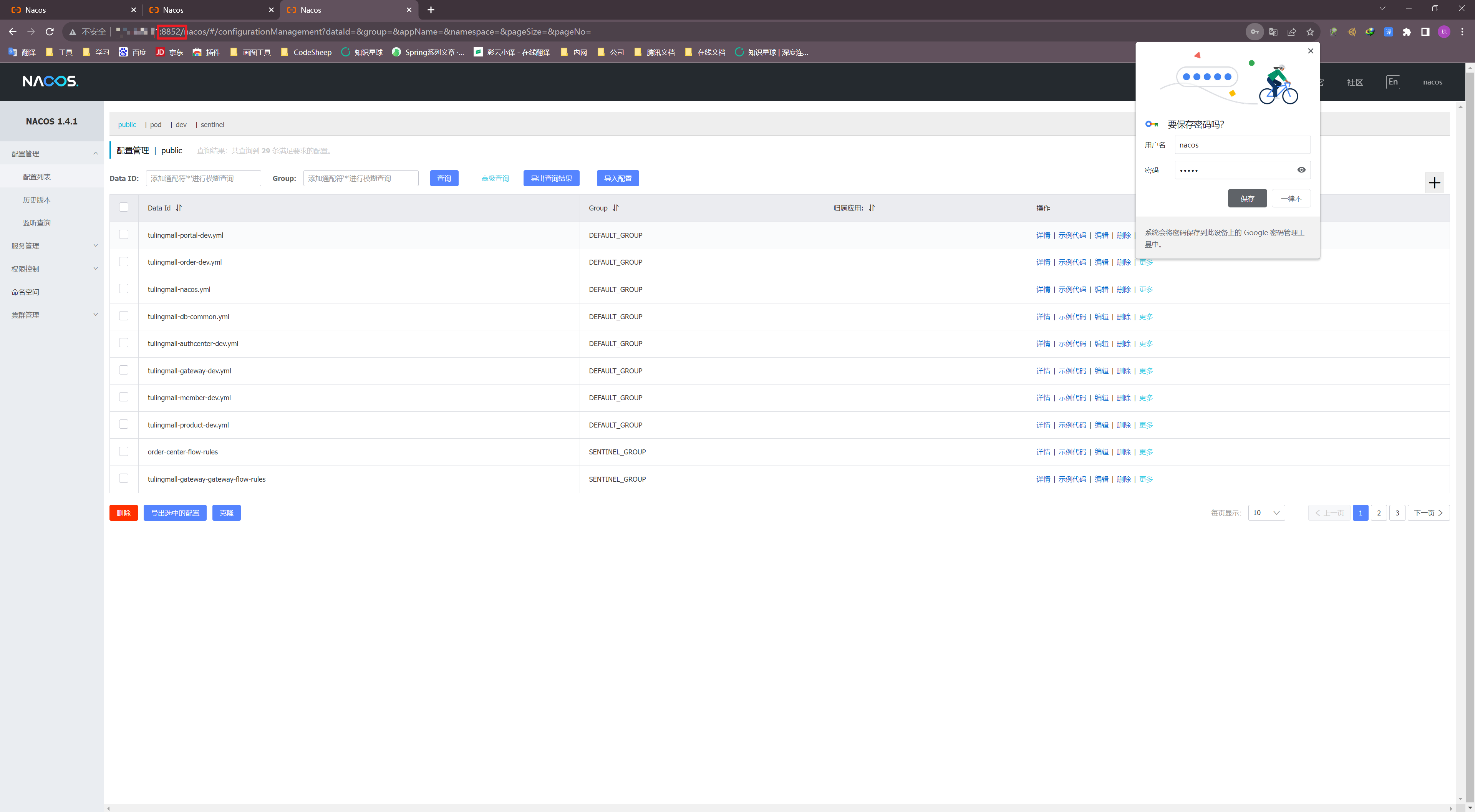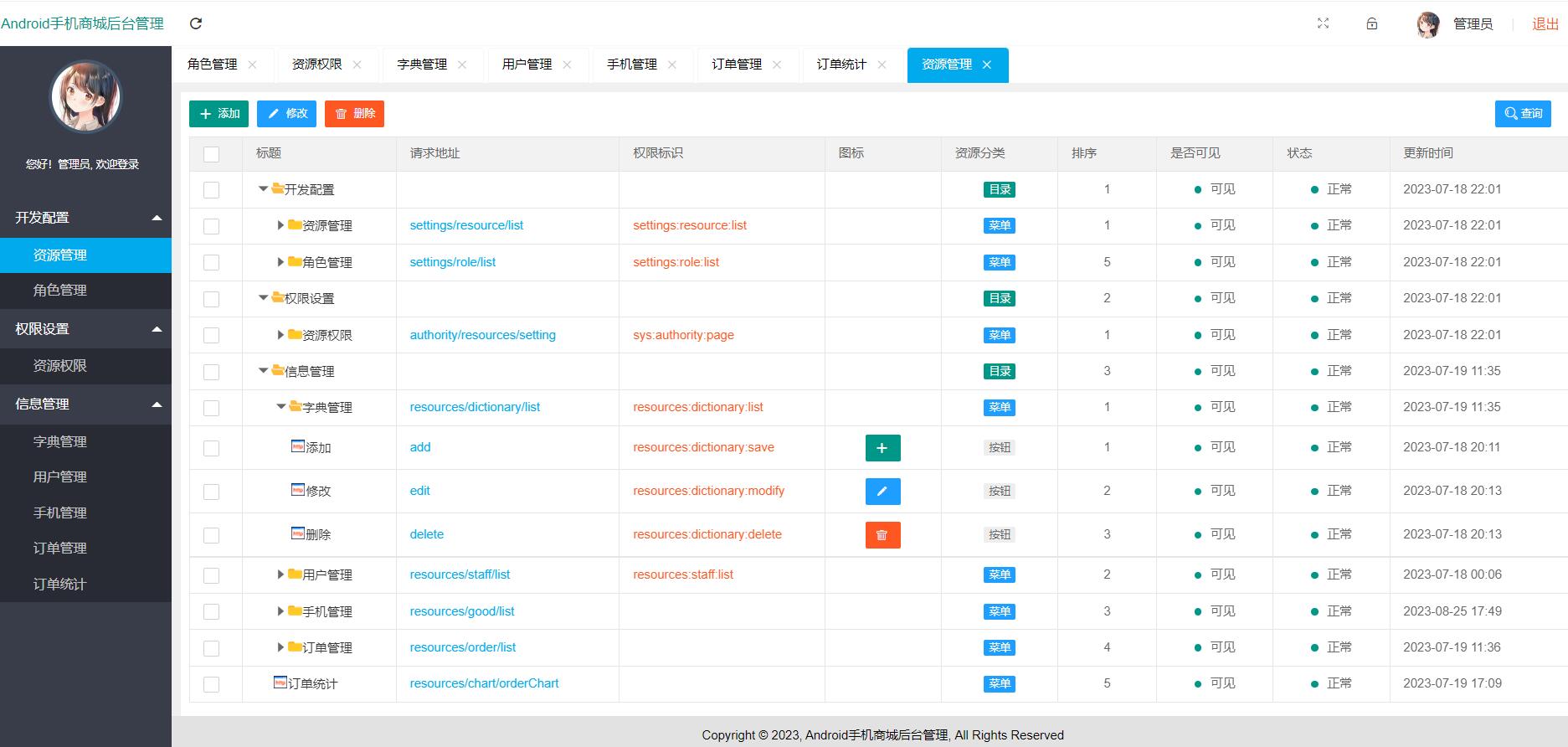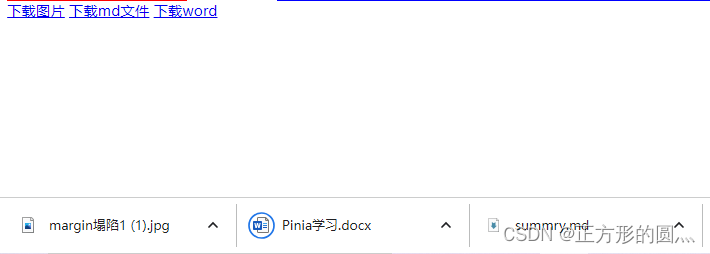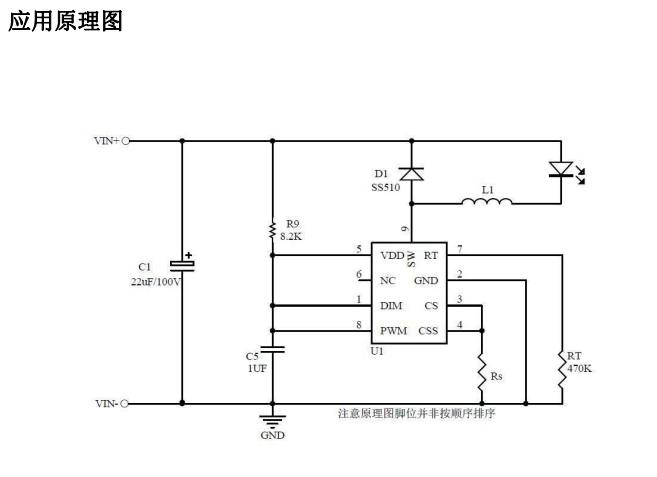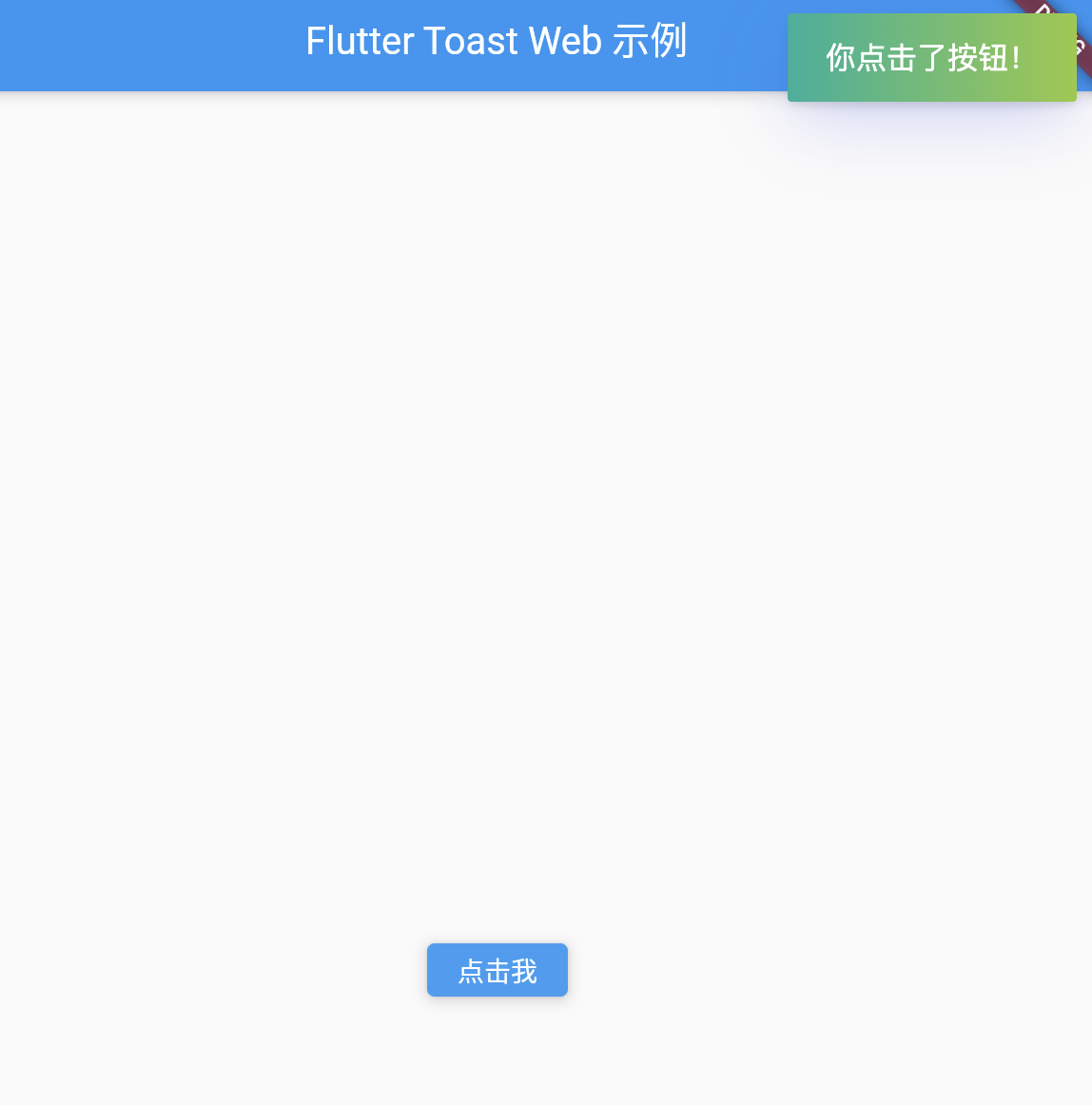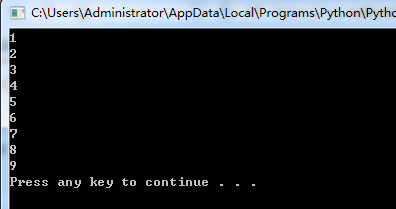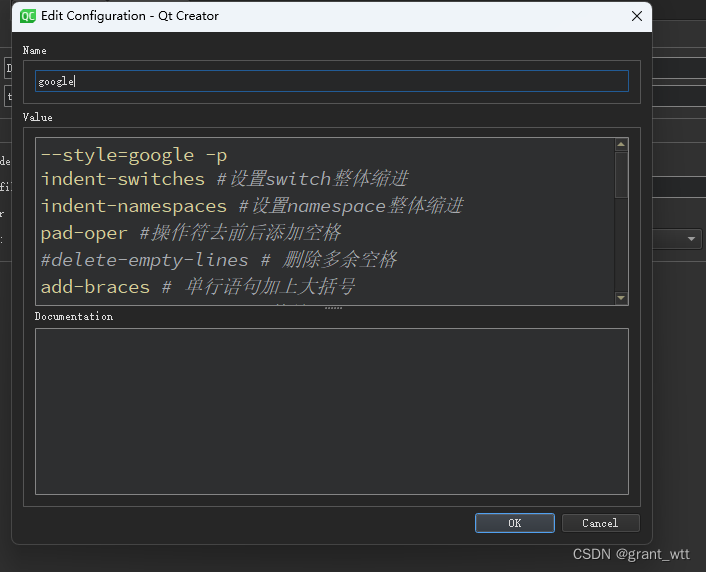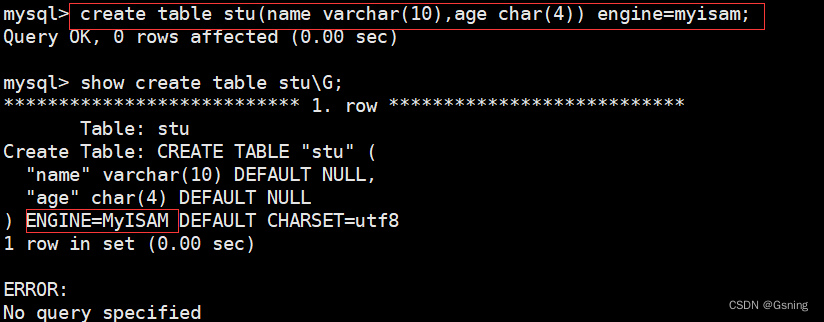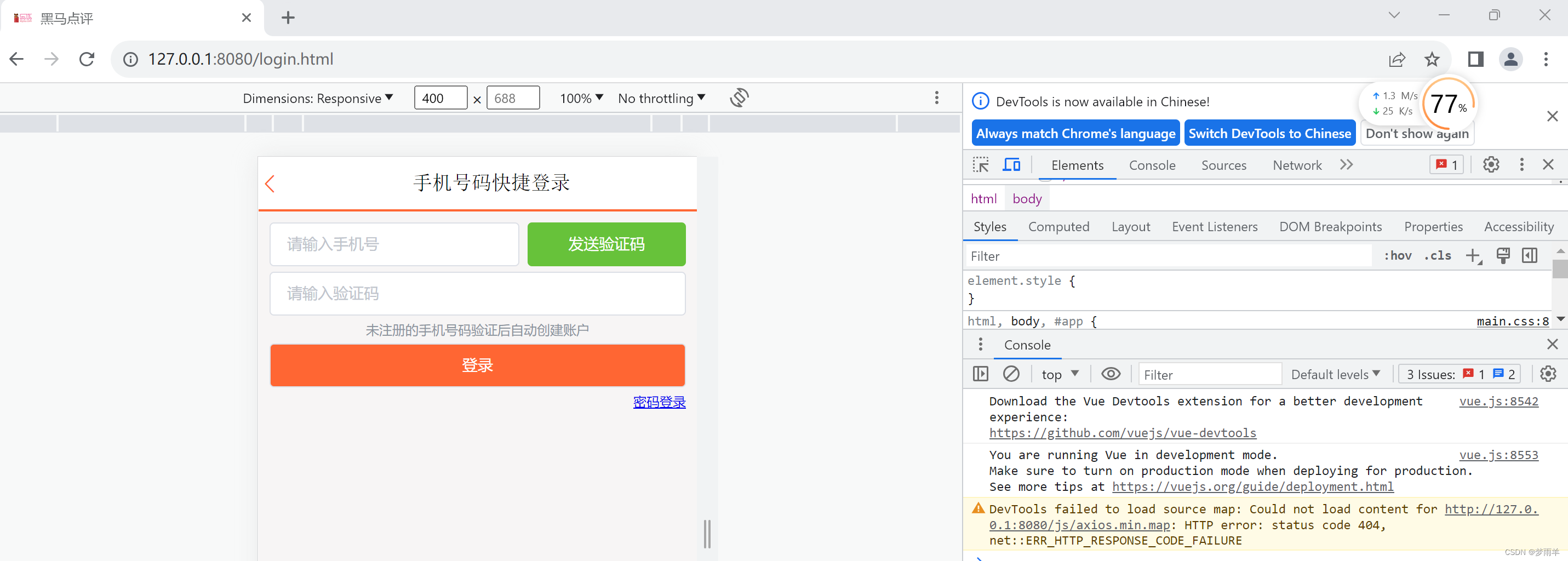目录
一. 线程的创建
1.1 pthread_create函数
1.2 线程id的本质
二. 多线程中的异常和程序替换
2.1 多线程程序异常
2.2 多线程中的程序替换
三. 线程等待
四. 线程的终止和分离
4.1 线程函数return
4.2 线程取消 pthread_cancel
4.3 线程退出 pthread_exit
4.4 线程分离 pthread_detach
五. 总结
一. 线程的创建
1.1 pthread_create函数
函数原型:int pthread_create(pthread_t *thread, const pthread_attr_t *attr, void *(start_routine)(void*), void *args)
函数功能:创建新线程
函数参数:
thread -- 输出型参数,用于获取新线程的id
attr -- 设置线程属性,一般采用nullptr,表示为默认属性
start_routine -- 新创建线程的入口函数
args -- 传入start_routine函数的参数
返回值:成功返回0,失败返回对应错误码
关于pthread系列函数的错误检查问题:
- 一般的Linux系统调用相关函数,都是成功返回0,失败返回-1。
- 但函数pthread系列函数不是,这些函数都是成功返回0,失败返回错误码,不对全局错误码进行设置。
代码1.1演示了如何通过pthread_create函数创建线程,在主函数中,分别以%lld和%x的方式输出子线程id,图1.1为代码的运行结果。
代码1.1:创建线程
#include <iostream>
#include <cstdio>
#include <cstring>
#include <pthread.h>
#include <unistd.h>// 新建线程的入口函数
void *threadRoutine(void *args)
{while(true){std::cout << (char*)args << std::endl;sleep(1);}return nullptr;
}int main()
{pthread_t tid; // 接收子线程id的输出型参数// 调用pthread_create函数创建线程// tid接收新线程的id,nullptr表示新线程为默认属性// 新线程的入口函数设为threadRoutine,参数为"thread 1"int n = pthread_create(&tid, nullptr, threadRoutine, (char*)"thread 1");if(n != 0) // 检验新线程是否创建成功{std::cout << "error:" << strerror(n) << std::endl;exit(1);}while(true){printf("main thread, tid = %lld 0x%x\n", tid, tid);sleep(1);}return 0;
}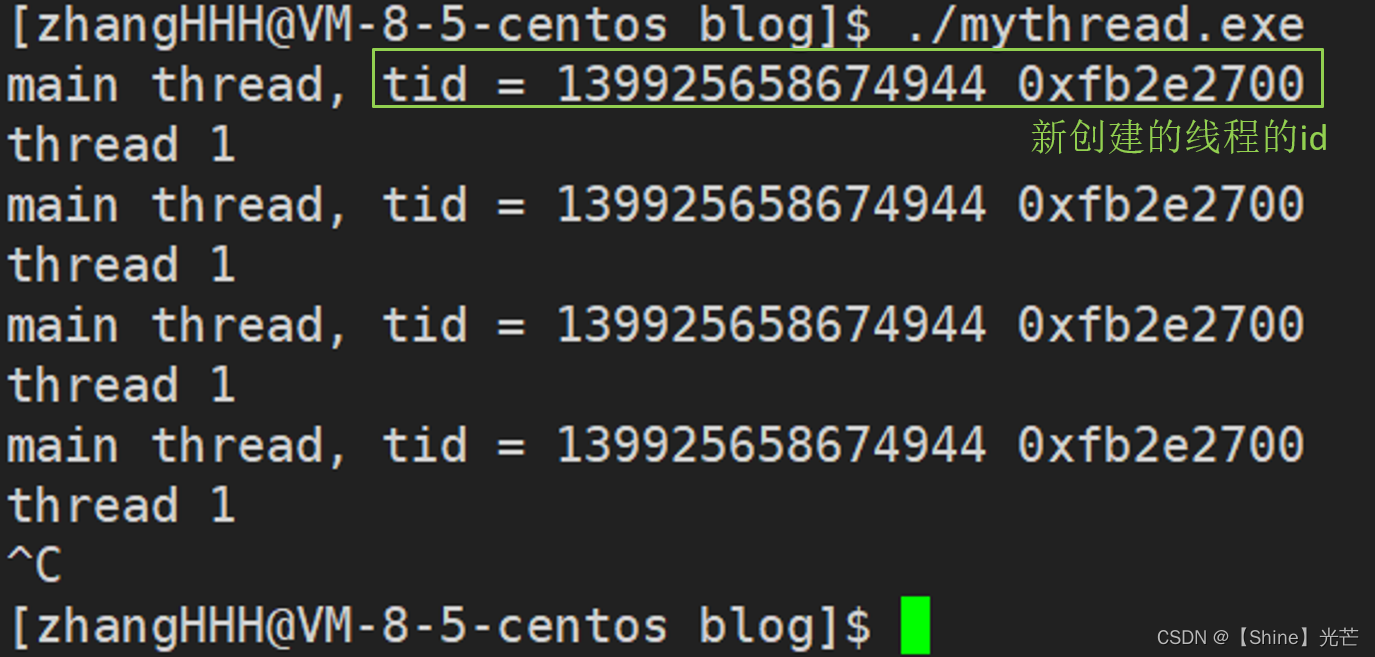
1.2 线程id的本质
如1.2所示,在Linux的线程库pthread中,提供了用于维护每个线程的属性字段,包括描述线程的结构体struct pthread、线程的局部存储、线程栈等,用于对每个线程的维护。
每个线程在线程库中用于维护它的属性字段的起始地址,就是这个线程的id,换言之,线程id就是动态库(地址空间共享区)的一个地址,Linux为64位环境,因此,代码1.1输出的线程id会很大,这个值就对应地址空间共享区的位置。
为了保证每个线程的栈区是独立的,Linux采用的方法是线程栈在用户层提供,这样每个线程都会在动态线程库内部分得一块属于自身的“栈区”,这样就可以保证线程栈的独立性,而主线程的栈区,就使用进程地址空间本身的栈区。
Linux保证线程栈区独立性的方法:
- 子线程的栈区在用户层提供。
- 主线程栈区采用地址空间本身的栈区。
线程id的本质:地址空间共享区的一个地址。
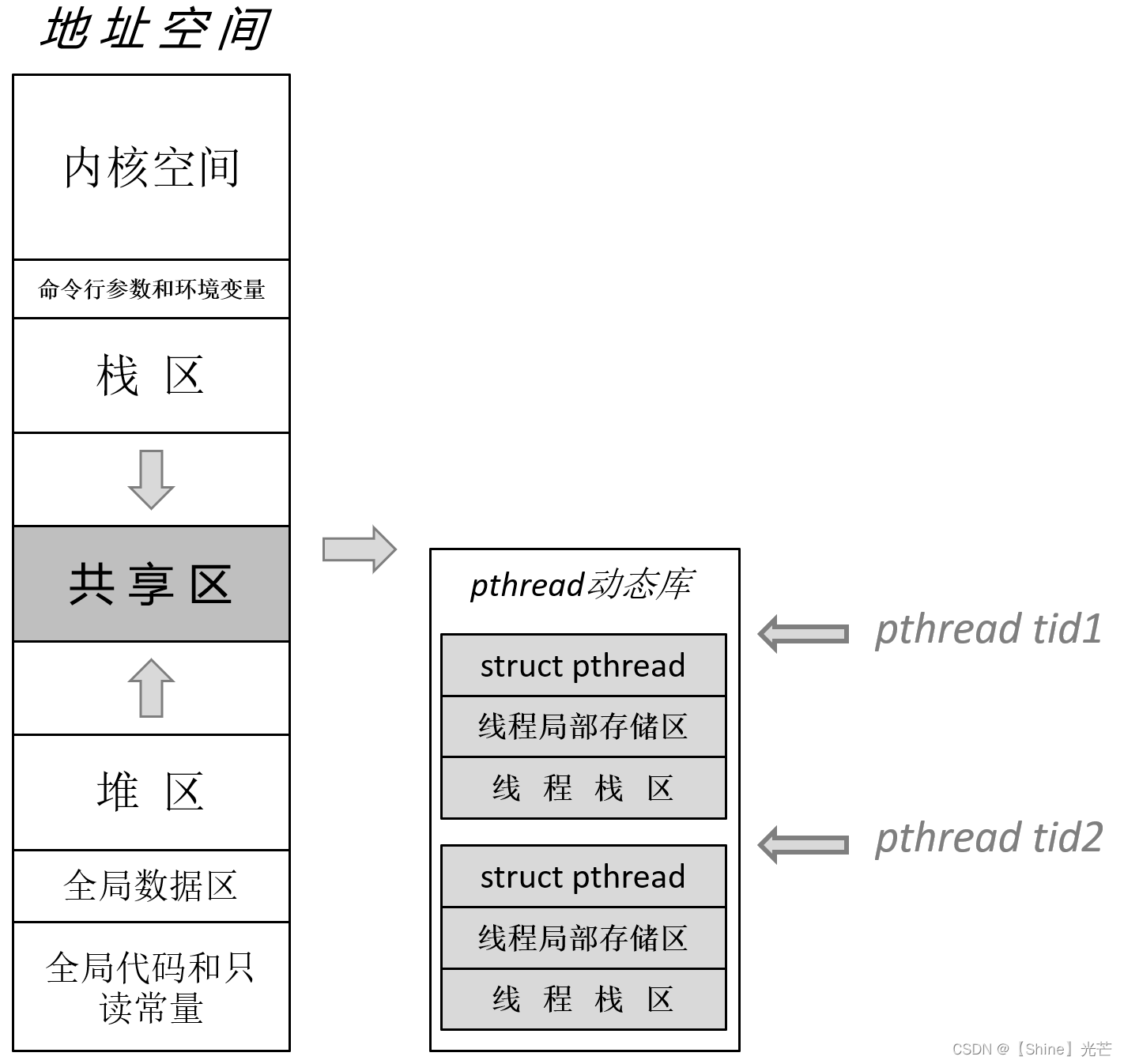
二. 多线程中的异常和程序替换
2.1 多线程程序异常
在多线程程序中,如果某个线程在执行期间出现了异常,那么整个进程都可能会退出,在多线程场景下,任意一个线程出现异常,其影响范围都是整个进程。
如代码2.1创建了2个子线程,其中threadRun2函数中人为创造除0错误引发异常,发现整个进程都退出了,不会出现只有一个线程终止的现象。
结论:任意一个线程出现异常,其影响范围都是整个进程,会造成整个进程的退出。
代码2.1:多线程程序异常
#include <iostream>
#include <pthread.h>
#include <unistd.h>void *threadRoutine1(void *args)
{while(true){std::cout << (char*)args << std::endl;sleep(1);}return nullptr;
}void *threadRoutine2(void *args)
{while(true){std::cout << "thread 2, 除0错误!" << std::endl;int a = 10;a /= 0; }return nullptr;
}int main()
{pthread_t tid1, tid2;//先后创建线程1和2pthread_create(&tid1, nullptr, threadRoutine1, (void*)"thread 1");sleep(1);pthread_create(&tid2, nullptr, threadRoutine2, (void*)"thread 2");while(true){std::cout << "main thread ... ... " << std::endl;sleep(1);}return 0;
}
2.2 多线程中的程序替换
与多线程中线程异常类似,多线程中某个线程如果进行了程序替换,那么并不会出现这个线程去运行新的程序,其他线程正常执行原来的工作的情况,而是整个进程都被替换去执行新的程序。
代码2.2在threadRoutine1函数中通过execl去执行系统指令ls,运行代码我们发现,在子线程中进行程序替换后,主线程也不再继续运行了,进程执行完ls指令,就终止了。
结论:多线程程序替换是整个进程都被替换,而不是只替换一个线程。
代码2.2:多线程程序替换
#include <iostream>
#include <cstdio>
#include <cstring>
#include <pthread.h>
#include <unistd.h>void *threadRoutine1(void *args)
{while(true){std::cout << (char*)args << std::endl;execl("/bin/ls", "ls", nullptr); // 子线程中进行程序替换exit(0);}return nullptr;
}int main()
{pthread_t tid;// 创建线程int n = pthread_create(&tid, nullptr, threadRoutine1, (void*)"thread 1");if(n != 0) {// 检验线程创建成功与否std::cout << strerror(n) << std::endl;exit(1);}while(true){std::cout << "main thread" << std::endl;sleep(1);}return 0;
}
三. 线程等待
线程等待与进程等待类似,主线程需要等待子线程退出,以获取子线程的返回值。如果主线程不等待子线程,而主线程也不退出,那么子线程就会处于“僵尸状态”,其task_struct一直得不到释放,引起内存泄漏。
- 通过pthread_join函数,可以实现对线程的等待。
- 线程等待只能是阻塞等待,不能非阻塞等待。
pthread_join函数 -- 等待线程
函数原型:int pthread_join(pthread_t thread, void **ret);
函数参数:
thread -- 等待线程的id
ret -- 输出型参数,获取线程函数的返回值
返回值:成功返回0,失败返回错误码
在代码3.1中, 线程函数threadRoutine中在堆区new了5个int型数据的空间,并赋值为1~5,线程函数返回指向这块堆区资源的指针,主线程等待子线程退出,主线程可以看到这块资源。注意线程函数返回值的类型为void*,使用返回值的时候要注意强制类型转换。
代码3.1:pthread_join线程等待
#include <iostream>
#include <cstdio>
#include <cstring>
#include <pthread.h>
#include <unistd.h>void *threadRoutine(void *args)
{std::cout << (char*)args << std::endl;int *pa = new int[5];for(int i = 0; i < 5; ++i){pa[i] = i + 1;}return (void*)pa;
}int main()
{pthread_t tid;pthread_create(&tid, nullptr, threadRoutine, (void*)"thread 1");int *pa = nullptr;// 等待线程退出,pa接收线程函数返回值pthread_join(tid, (void**)&pa);// 获取线程函数返回值指向的空间内的资源std::cout << "thread exit" << std::endl;for(int i = 0; i < 5; ++i){printf("pa[%d] = %d\n", i, pa[i]);}delete[] pa;return 0;
}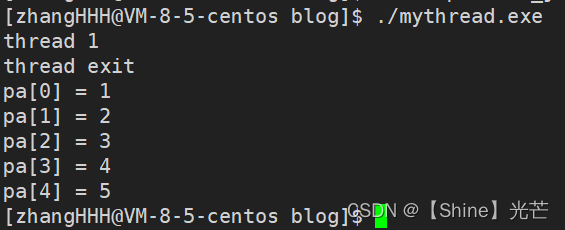
四. 线程的终止和分离
可以实现线程终止的方法有:
- 线程函数return。
- 由另一个线程将当前线程取消pthread_cancel。
- 线程退出pthread_exit。
4.1 线程函数return
pthread_create函数的第三个参数start_routine为线程函数指针,新创建的线程就负责执行这个函数,如果这个函数运行完毕return退出,那么,线程就退出了。
但是这种方法对主线程不适用,如果主线程退出,就是进程终止了,全部线程都会退出。
结论:如果线程函数return,那么线程就退出了,但主线程return进程就退出了,不适用这种退出方式。
线程函数接收一个void*类型的参数,返回void*类型参数,如果线程函数运行到了return,那么这个线程就退出了,如代码3.1中的threadRoutine,就是采用return来终止线程的。
代码4.1验证了主线程退出的情况,设定线程函数为死循环IO输出,但是主线程在创建完子线程sleep(2)之后return,发现线程函数并没有继续运行,证明了主线程退出不适用于return这种方法来终止。
代码4.1:验证主线程不能通过return退出
// 线程函数死循环
void *threadRoutine1(void *args)
{while(true){std::cout << (char*)args << std::endl;sleep(1);}return nullptr;
}int main()
{pthread_t tid;// 创建线程int n = pthread_create(&tid, nullptr, threadRoutine1, (void*)"thread 1");std::cout << "main thread" << std::endl;sleep(2); // 主线程sleep 2s后退出return 5;
}
4.2 线程取消 pthread_cancel
pthread_cancel函数可用于通过指定线程id,来取消线程。
pthread_cancel -- 取消线程
函数原型:int pthread_cancel(pthread_t thread)
函数参数:thread -- 被取消的线程的id
返回值:成功返回0,不成功返回非0的错误码
一般而言,采用主线程取消子线程的方式来取消线程,一个线程取消自身也是可以的,但一般不会这样做,pthread_cancel(pthread_self()) 可用于某个线程取消其自身,其中pthread_self函数的功能是获取线程自身的id。
- pthread_self函数 -- 获取线程自身的id。
如果一个线程被取消了,那么就无需在主线程中通过pthread_join对这个线程进行等待,但如果使用了pthread_join对被取消的线程进行等待,那么pthread_join的第二个输出型参数会记录到线程函数的返回值为-1。
结论:如果一个线程被pthread_cancel了,那么pthread_join会记录到线程函数返回(void*)-1。
在代码4.2中,通过pthread_cancel函数,取消子线程,然后pthread_join等待子线程,输出强转为long long类型的返回值ret,记录到ret的值为-1。
代码4.2:取消子线程并等待取消了的子线程
// 线程函数
void *threadRoutine1(void *args)
{while(true){std::cout << (char*)args << std::endl;sleep(1);}return (void*)10;
}int main()
{pthread_t tid;// 创建线程pthread_create(&tid, nullptr, threadRoutine1, (void*)"thread 1");std::cout << "main thread" << std::endl;sleep(2); pthread_cancel(tid); // 取消id为tid的子线程void *ret = nullptr;int n = pthread_join(tid, &ret); // 等待已经取消的线程退出std::cout << "ret : " << (long long)ret << std::endl;return 0;
}
4.3 线程退出 pthread_exit
pthread_exit 函数在线程函数中,可用于指定线程函数的返回值并退出线程,与return的功能基本完全相同,注意,exit不可用于退出线程,在任何一个线程中调用exit,都在让整个进程退出。
pthread_exit 函数 -- 让某个线程退出
函数原型:void pthread_exit(void *ret)
函数参数:ret -- 线程函数的退出码(返回值)
代码4.3在线程函数中调用pthread_exit终止线程,指定返回值为(void*)111,在主线程中等待子线程,并将线程函数返回值存入ret中,输出(long long)ret的值,证明子线程返回(void*)111。
代码4.3:通过pthread_exit终止线程
#include <iostream>
#include <cstdio>
#include <cstring>
#include <pthread.h>
#include <unistd.h>// 线程函数
void *threadRoutine1(void *args)
{int count = 0;while(true){std::cout << (char*)args << ", count:" << ++count << std::endl;if(count == 3) pthread_exit((void*)111);sleep(1);}return nullptr;
}int main()
{pthread_t tid;// 创建线程pthread_create(&tid, nullptr, threadRoutine1, (void*)"thread 1");std::cout << "main thread" << std::endl;sleep(5); void *ret = nullptr;pthread_join(tid, &ret); std::cout << "[main thread] child thread exit, ret:" << (long long)ret << std::endl;return 0;
}
4.4 线程分离 pthread_detach
严格意义上讲,pthread_detach并不算线程退出。即使一个线程函数中使用了pthread_detach(pthread_self())对其自身进行分离,线程函数在pthread_detach之后的代码也会正常被执行。
pthread_detach一般用于不需要关心退出状态的线程,被pthread_detach分离的子线程,即使主线程不等待子线程退出,子线程也不会出现僵尸问题。
一般来说,都是线程分离其自身,当然也可以通过主线程分离子线程,但不推荐这么做。
经pthread_detach分离之后的线程,不应当pthread_join等待,如果等待一个被分离的线程,那么pthread_join函数会返回错误码。
结论:(1).pthread_detach用于将不需要关系关系退出状态的子线程分离 (2).被分离的线程不应被等待,如果被等待,那么pthread_join会返回非0错误码。
代码4.4演示了经pthread_detach分离之后线程函数继续运行,等待被分离的线程失败的情景。
代码4.4:线程分离及等待被分离的线程
#include <iostream>
#include <cstdio>
#include <cstring>
#include <pthread.h>
#include <unistd.h>// 线程函数
void *threadRoutine1(void *args)
{// 子线程将其自身分离pthread_detach(pthread_self());int count = 0;while(true){std::cout << (char*)args << ", count:" << ++count << std::endl;if(count == 3) pthread_exit((void*)111);sleep(1);}return (void*)10;
}int main()
{pthread_t tid;// 创建线程pthread_create(&tid, nullptr, threadRoutine1, (void*)"thread 1");std::cout << "main thread" << std::endl;sleep(5); void *ret = nullptr;int n = pthread_join(tid, &ret); // 等待已经取消的线程退出 if(n != 0) // 检验是否等待成功{std::cout << "wait thread error -> " << strerror(n) << std::endl;}return 0;
}
五. 总结
- pthread_create函数可以创建子线程,关于线程的管理方法及属性字段,被记录在动态库里,线程id本质上就是地址空间共享区的某个地址。
- 由于Linux在系统层面不严格区分进程和线程,CPU调用只认PCB,因此为了保证每个线程栈空间的独立性,子线程的栈由用户层(动态库)提供,主线程的栈区就是地址空间的栈区。
- 在多线程中,任何一个线程出现异常,影响范围都是整个进程,如果在某个线程中调用exec系列函数替换程序,那么整个进程都会被替换掉。
- pthread_join的功能为在主线程中等待子线程,如果子线程没有被detach且不被主线程等待,那么子线程就会出现僵尸问题。
- 有三种方法可以终止线程:(1). 线程函数return,这种方法不适用于主线程。(2). pthread_exit 函数终止线程函数。(3). pthread_cancel 取消线程,被取消的线程不需要被等待,如果等待会记录到线程函数返回(void*)-1。
- 如果某个子线程的退出状态不需要关心,那么就可以通过pthread_detach分离子线程,分离后的线程不应被等待,如果被等待,那么pthread_join函数就会返回非零错误码。
